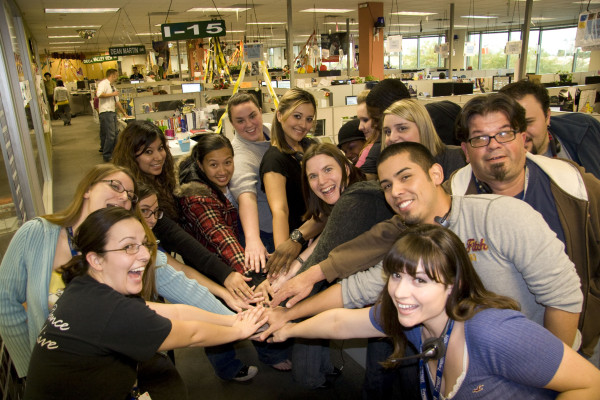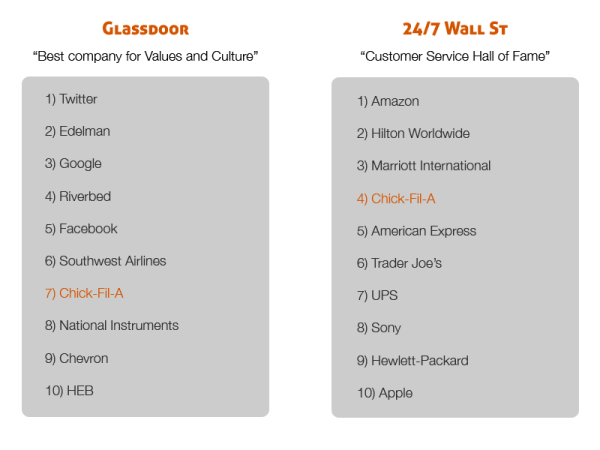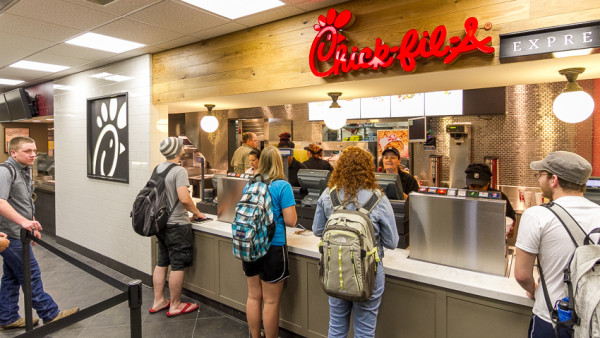What being customer centric really means? That’s actually a very good question. To answer it let me tell you a story, the story of the company with one of the most customer centric strategies in the world: Zappos
From Shoes to Customers, the Zappos’ fairytale:
Once upon a time, a friendly guy named Nick was looking for a pair of shoes. After going through all the stores at his local mall, he couldn’t quite find the right fit. So he got home and looked on the internet. Unfortunatelly he didn’t have much more success with online shopping. That’s when Nick had an idea: why not create an online store dedicated to shoes!
Nick quit his day job and Zappos was born. He started building an online shop customers would actually love, offering overnight shipping and free return. It was an awesome idea and customers started to buy like crazy. Soon the company was faced with a difficult decision. Should they offshore their customer service department? So they contacted offshore call centers and tried out a few of them but nothing seemed quite right. That’s when one of their best decision was made: never compromise on customer service!

The team was kept in-house and every new employee was even required to take part into a customer service training when joining the company. And you know what the best part is: employees are allowed to do a lot for customers. There are no call time limits, no scripts and everyone is even invited to make a personal connection with customers by talking about… well anything they want.
How can they afford to offer such a high level of customer service you might ask? They cut costs on marketing. With one of the highest customer retention rate in the industry and word of mouth working for them, they don’t need to invest millions in huge marketing campaigns.
Zappos decided to truly focus on customers and they lived happily ever after.
Now that’s what customer centric means:
- A product that’s build with customer’s needs in mind
- Customer Service that’s not limited to a department
- Marketing by and for customers
Anyone can say they have an amazing customer centric strategy but guess what: customers don’t care about what you say, they care about what you do!
With that in mind, take a good look at your business’ values and ask yourself the following questions:
- Are those values making your customers’ life better (by solving a problem or answering a need)?
- Are your employees really living by those values?
- How is your team communicating those values to customers?
- Are those values at the core of every business decision you make?
- Is your marketing reflecting those values and not only talking about them?
If you can’t answer or the answer seems off, you might need to either change your values or change the way you do business.
1. It all starts with a customer centric company culture
Glassdoor published a list of the “best companies for values and culture in 2014” and 24/7 Wall St a “customer service hall of fame” list.
One one side we have employees ranking their company’s culture and on the other customers ranking the service they received from companies. The mix of those two give us a good idea of companies with widely adopted customer oriented values. Let’s just say if the employees love their company and customers love dealing with those employees, we have a company that’s doing things right!
So let’s take a look at these lists:

Only Chick-Fil-A managed to make both Top 10s, even if Apple is mentioned later in the Glassdoor list.
There would be lot of things to say about those lists but I will let you share your own reaction in the comments (I’d be glad to share mine with you as well!).
For now let’s take a closer look at our clear winner: Chick-Fil-A. What makes this company so special that both customers and employees love it?
For those of you who, like me, are not familiar with the brand, here are a few things you should know. Chick-Fil-A is a chicken fast-food restaurant famous for its “chicken sandwich”. The brand is also known for its christian CEO Dan T Cathy, and his controversial stand on gay marriage.
The company’s culture is widely influenced by its CEO’s faith, giving birth to policies like “restaurants must be closed on Sundays” or to a purpose statement mentioning God: “To glorify God by being a faithful steward of all that is entrusted to us. To have a positive influence on all who come in contact with Chick-fil-A.”

Let’s leave religious convictions aside and see how the company designed a customer centric strategy to set themselves apart. During a conference at SAS Headquaters, Cathy said that their key to success is to remember that “we’re all people with a lot of emotional things going on that don’t necessarily show on the surface”.
Following that way of thinking, employees and franchisees are encouraged to come up with any idea to delight customers. Most will for example offer to carry heavy trays for mothers with young kids, while a restaurant even offers “expired” (passed the freshness time set by the brand but still fit for consumption) nuggets to pet owner so they can give some to their dogs. Cathy is a firm believer that it’s the “little things” that build great customer experiences and is determined to teach that to his employees.
Another important aspect of Chick-Fil-A’s excellent service is the positive language they use. When you say thank you after receiving your order, employees won’t reply with a simple “You’re Welcome” or “No problem”, they will always answer “My Pleasure”. According to an article on FastCompany, the founder of the chain got the idea while staying at Ritz Carlton where employees are used to use this kind of distinguished language. He then thought, why not offer our fast food customers a first class experience and great them like VIPs. Indeed, why not?
Finally, the brand spends more than $ 1 Million a year evaluating his service. They run focus groups, and send out surveys to customers in order to know what they could improve. Following the survey, each location is sent a report highlighting what works and areas of improvement, making sure every single restaurant is working hard towards customer satisfaction.
The company might have been in the news a lot in the recent years for its controversial culture but it’s important to highlight that their success is due to the other aspect of their culture. The one that’s focused on people and how to serve them. Employees are not simply trained for efficiency, they are trained to be courteous and creative in the way they delight customers. And that’s why Chick-Fil-A manages to win as much money in 6 days as McDonalds does in 7.
2. Customers or employees first? How about both?
It is impossible to be customer-centric without being employee-centric first. However it is very possible to be employee-centric without being customer-centric.
Look at Google for example, they’ve always been know for being one of the best employers. However, if you’re an active Adwords’ customer you might also have known them for their almost nonexistent customer service. While they have been making a lot of efforts lately, launching chat and even video support, the brand has long been known for its bellow average customer service. Simply because it was almost impossible at some point to find a way to reach them!
Making a quick research on the suject I found this amazing Quora feed called “Why is Google so abysmally bad at human based-customer service?”
The truth is, Google mostly offers free services to millions of people therefore making it difficult to offer customer service to all of them while still being profitable. The company is hiring mostly engineers, putting its focus on the product rather than the service. The question is to see if they will however try to improve their service for paying customers like small companies that are often left out.
It might be great to work at Google, but it doesn’t do customers any good if they never get to contact anyone from the company in person anyway.
The question is: how can you teach your employees to adopt a customer-centric mindset?
-
Positive Peer Pressure
According to Micah Solomon, peer pressure can play a great role in turning employees into customer lovers.
He’s of course talking about positive peer pressure. The kind you find in companies like Apple where the cool kids are the ones who love the product or at Disney were every employee picks up trash in the park when they see some laying on the floor.
I love this article because I actually experienced positive peer pressure myself at a previous job. First of all, the company provided a 3 days training to all employees briefly introducing their values and rules. I remember following the training with 3 guys who worked for the company every summer on the production lines. What stroke me was how receptive they were to the training and how eager they were to share their own experience on how everything that was said that day really mattered in their everyday job.
I noticed this sort of engagement later on in the communication department where employees who engaged the most with customers truly were “the cool kids” as Solomon would say. This really impacted my work! I went from being quite shy and introverted to actually being excited about connecting with customers.
If you want that to happen at your company you need to
- hire people who fit your company’s culture
- reward employees who embody this culture to make them the example to follow
See the main problem with customer service is that companies often reward people who have the lowest average handling time per customer or those who upsell the most. This is not really customer-centric isn’t it?
The bottom line is you need to find evaluation metrics that will highlight high level service and that comply with your brand’s message. As I said before, Zappos employees for example are encouraged to make Personal Connections and that’s what they are evaluated on. People who actually try to make a connection with customers are rewarded, even if they talk a little longer on the phone.
-
Empower employees to help customers
Micah Solomon also has a great example on this particular topic. In an article about Ritz-Carlton he explains how the hotel chain empowers its employees to make sure they deliver 5 star customer service. Their method can come as a shock to most of us: as it turns out they give employees the right to spend $ 2000 per guest to solve any problem and make sure they have the best experience possible.
No I didn’t add 1 or 2 zeros, that’s how much Ritz Carlton cares about customers. Of course employees rarely (never) use that much money on customers but just knowing that they can makes them feel like they actually have the power to help.
Without going to that lengh, it’s important to give your employees the ability to help. Let’s be clear, no matter how well written your script is, no employee could ever give WOW service if they need to read it. Customer service is about personal connections between a customer and your employee. Give your employees the opportunity to be themselves! Give them rules and tips to follow instead of scripts. In other words, help them get better instead of telling them that they know nothing and need to follow rules made up by people who probably never worked in customer service a day in their life.
3. Encourage customers to talk to you instead of pushing them away
I know, talking to customers is time consuming and it would sometimes be so much more efficient to just write a killer FAQ and direct 90% of them towards it. Does this sound familiar?
Don’t get me wrong, FAQs and Knowledge Bases are great. They are needed, as many customers will actually prefer to solve a problem on their own first. But it can’t be the only option you give customers.
-
Every question is an opportunity to gain a customer for life
Don’t push customers who actually want to talk to you away! Let’s say for example that someone has a question about shipping costs. I think it’s fairly safe to say that you answer this question in your FAQ or anywhere else on your website. However what if you stopped seeing this kind of questions as a waste of time and started seeing it as a great opportunity to build a deeper connection with a customer.
Let’s look at it this way: a customer will usually wait until they have a problem before contacting you. Before that, they have no actual proof of the quality of your service and therefore don’t see it as a reason to stick with your brand. If you want to make customer service your competitive advantage, you need to reach out to as many customers as you can (or encourage them to reach out to you). With this in mind, someone asking a question about shipping costs is a golden opportunity to show how much your company cares and how well it treats its customers. A simple question can help you get a long-term customer!
-
Make it super easy to reach you
Think about how companies use FAQs (I swear I’m not a total FAQ hater). Most of them try to direct you there after you clicked on contact us, therefore making something as simple as reaching out to you a real obstable course. The same observation goes with the phone where customers often have to go through several menus to finally get to a real person.
What went wrong with customers service? Why are so many companies trying to hide from customers? I am serious, are they trying to help customers or are they just waiting until they finally go away! I’m more and more leaning towards the second option…
The good news is, others mistakes create great opportunities for customer centric businesses like yours. All you need to do is think different and get rid of the barriers between you and your customers. In other words, this means:
- no redirecting customers from your contact page to your FAQ
- no never ending menus on your phone line
- a chat system that actually allows instant contact
- no more no-reply emails
Well you got my point, just step into your customer’s shoes and see what you can change to make it easier to reach you.
4. Building a customer centric strategy with live chat
Like phone, email, social media or any form of customer service, chat isn’t perfect. To be honest, the way most companies use it is really far from perfect. We, and I believe all live chat companies out there, designed a product to make it easier and quicker to connect with online customers. To that companies soon added “cheaper” which led to robotic like chats turning live chat into some kind of interactive Knowledge Base.
I might be harsh but I have heard on several occasions people confusing live chat (with a real person on the other hand of the chat) with artificial intelligence systems (no one on the other end of the chat).
If you are looking to adopt a customer-centric mindset, you’ll probably want to build a chat strategy around quality rather than quantity. Chat can be great to connect with online customers. Think about it, it’s perfect as long as your customers are rather tech-savvy people.
-
Chat is convenient
People can contact you with a simple click, without even leaving your website. You can basically browse with them, send them wherever you want in a matter of seconds and get their reaction right away.
-
Chat is time efficient
Text chat allows you to multitask while taking care of a customer. Considering that your customer will probably do just the same. It can also be a good idea to allow your agents access to external web ressources like Google. Just searching for something to answer a customer, as simple as it might sound, can greatly increase satisfaction.
-
But it’s not that easy to communicate happiness or enthusiasm
One of the problems with text chat is that it’s a little harder to communicate your company’s culture as the channel is seen as a little impersonal. The same problem goes with emails so you can take some of the codes you adopted there and transpose them to chat.
I spoke with Jon from the Zappos Insight’s team few months ago to know how they managed to be so good at serving customers. When I mentioned chat he admitted that the biggest challenge with the channel was to communicate Zappos friendly tone to customers through text.
I actually had a chat with one of their consultants just to see how they would handle it and I have to say that it was one of the best chats I ever had with a company.
There’s really no magic recipe to sound friendly on chat but here are few points you can look out for:
- quick response time (it makes it a lot easier to get really engaged in the conversation)
- casual tone / no formal vocabulary (contrary to email that can be quite formal, chat almost always involves a more casual tone)
- know when to forget about your product (I spoke with France and Paris with Zappos and let me tell you I was much more receptive when the agent brought back their company and product at the end)
- define unique greetings that fit your company’s culture (Netflix always asks for the customer’s name before getting into the conversation for example. It helps creating a bound)
- Don’t use too many canned answers (no matter how useful they can be, it ends up killing the conversation if you use too many of them)
-
Try video chat
Our solution offer video chat in addition to text chat which can be a good way to build stronger relationships with customer. It won’t apply to every situation but customers with more complex requests will benefit from this more immersive form of communication.
Just don’t forget to take into account the specificities that go with this particular channel:
- define a dress code for employees (casual is not a problem if that’s the image you want to communicate)
- be careful about your background (we don’t always think about this detail but the best would have to have a neutral background)
- train employees to use positive body languages (don’t cross arms, smile, maintain eye contact…
In the end, customers won’t remember about agents “apologizing for their inconvenience”, they’ll remember about them being friendly, funny or helpful. When trying to build a customer centric culture, the important is to find your own voice and not reproduce what other companies do. Netflix agents for example have a lot of fun including movie and TV show references in their chat conversations. Zappos is all about making personal connections.
What about you? What makes you and your company unique? Share your experience in the comments
Business Articles | Business 2 Community
(502)








